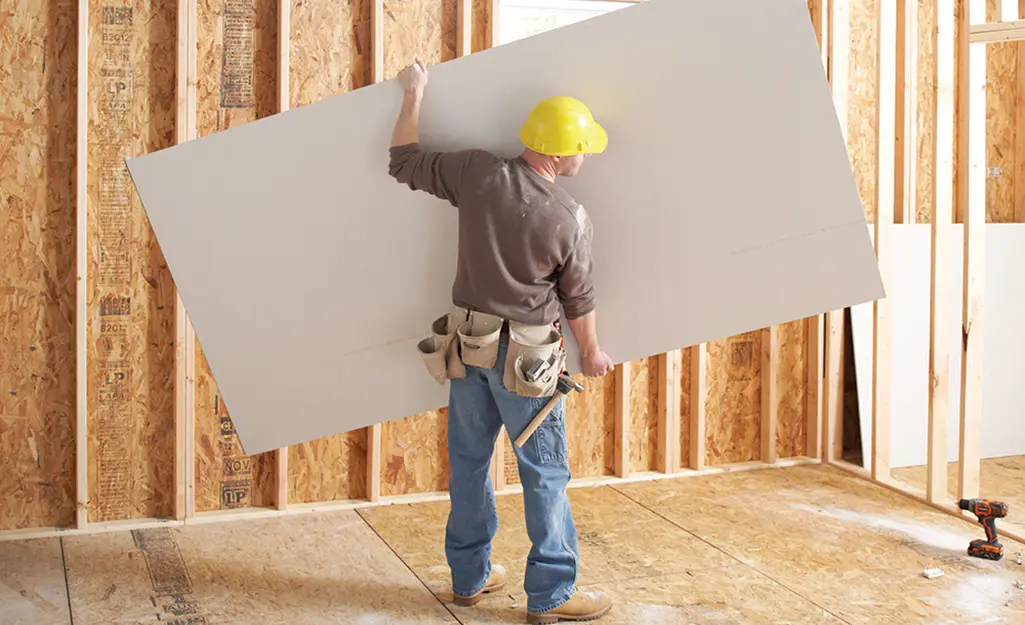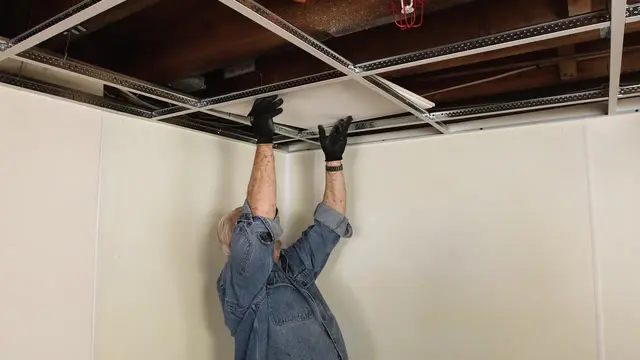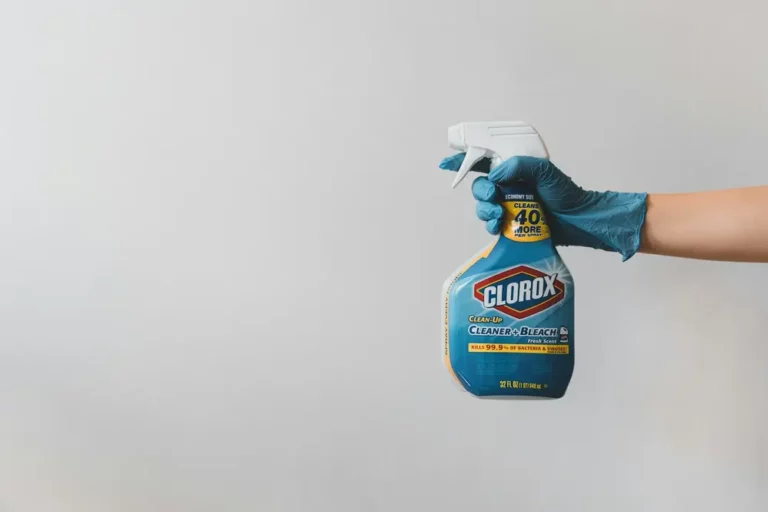Does Drywall Burn? Exploring the Flammability of Drywall
Drywall is a common building material used in most modern homes. It is made of gypsum, which is a mineral that is not combustible on its own. However, the paper covering on the drywall can burn if exposed to high temperatures. This raises the question, does drywall burn?
The short answer is that drywall is not highly flammable. According to Fire Proof Depot, drywall is somewhat fireproof due to the gypsum content. The paper covering on the drywall will burn at 451°F (232.8°C) for the first few minutes, but the fire will subside immediately afterward. In fact, drywall is used as a fire barrier in many buildings because of its resistance to fire.
However, it is important to note that not all drywall is created equal. Type X drywall, which is 5/8-inch thick and contains special additives like fiberglass, is the most fireproof drywall available. It can withstand high temperatures and increase a wall’s fire rating to a minimum of 1 hour, from the 30-minute rating for standard ½-inch drywall. In this article, we will explore the topic of whether drywall burns and provide more information on the fire resistance of different types of drywall.
Does Drywall Burn?
Drywall is a common building material used in homes and commercial buildings. It is made of gypsum, which is a mineral that is not combustible. However, the paper covering on drywall can burn. So, does drywall burn?
The answer is that it depends on the circumstances. Drywall is somewhat fireproof, but it is not completely fireproof. When exposed to high temperatures, drywall can ignite and burn. However, it is resistant to flames and can slow down the spread of fire.
The fire resistance of drywall depends on its thickness and the type of paper used to cover it. Fire-resistant drywall is available that has been treated with chemicals to increase its fire resistance. This type of drywall can slow down the spread of fire and give occupants more time to evacuate a building.
It is important to note that even fire-resistant drywall is not completely fireproof. In the event of a fire, it is important to follow proper fire safety procedures and evacuate the building as quickly as possible.
In conclusion, drywall is somewhat fireproof, but it is not completely fireproof. Fire-resistant drywall is available that can slow down the spread of fire, but it is still important to follow proper fire safety procedures in the event of a fire.
Fire Resistance of Drywall
Drywall is a common building material used in most construction projects. One of the most important features of drywall is its fire resistance. Drywall is made of gypsum, which is a mineral that is not combustible on its own. Additionally, water is fused into its construction, which blocks the transfer of heat through the material.
While all drywall is manufactured using fire-resistant materials, different types of drywall resist burning for different periods. For instance, a conventional 1/2-inch thick sheet of drywall will stand up to 30 minutes of fire. However, Type X or C drywall can resist burning for up to four hours. This type of drywall contains special additives like fiberglass to increase its fire resistance, making it the most fireproof drywall available.
It’s important to note that fire-resistant drywall costs 50% more than regular drywall. Proper installation can also increase drywall’s fire resistance, so it’s important to make sure that the installation is done correctly.
In summary, drywall is somewhat fireproof due to its composition of gypsum and water. It is not combustible on its own and can resist burning for a certain period of time depending on the type of drywall. It’s important to use the appropriate type of drywall for the intended application and to ensure proper installation to maximize its fire resistance.
Types of Drywall
Drywall is a common building material used to create walls and ceilings. There are several types of drywall available, each with unique characteristics and uses.
Standard Drywall
Standard drywall is the most common type of drywall used in residential and commercial construction. It is made of gypsum plaster wrapped in a layer of paper. Standard drywall is easy to install and can be used for walls and ceilings in most rooms of a house or building.
Fire-Rated Drywall
Fire-rated drywall is designed to slow the spread of fire in the event of a fire. It is made of gypsum plaster and contains special additives that give it fire-resistant properties. Fire-rated drywall is available in different fire resistance ratings, with some able to withstand fire for up to four hours.
Moisture-Resistant Drywall
Moisture-resistant drywall is designed for use in areas that are prone to moisture, such as bathrooms and kitchens. It is made of gypsum plaster and contains special additives that make it resistant to moisture, mold, and mildew.
Soundproof Drywall
Soundproof drywall is designed to reduce noise transmission between rooms. It is made of gypsum plaster and contains additional layers of material, such as metal or fiberglass, that help absorb sound.
Impact-Resistant Drywall
Impact-resistant drywall is designed to withstand damage from impacts, such as from a door handle or a piece of furniture. It is made of gypsum plaster and contains additional layers of material, such as fiberglass, that make it more durable.
Overall, the type of drywall you choose will depend on the specific needs of your project. It’s important to choose the right type of drywall to ensure that your walls and ceilings are strong, durable, and able to withstand the demands of daily use.
Understanding Fire Ratings
As I researched drywall and fire resistance, I came across the concept of fire ratings. Fire ratings are a measure of how long a material can withstand fire before failing. The higher the fire rating, the longer the material can withstand fire.
When it comes to drywall, there are several types of fire-rated drywall available. The most common type is Type X drywall, which has a fire rating of at least one hour. This means that it can withstand fire for at least one hour before it fails. Type X drywall is often used in residential and commercial buildings to meet building codes and safety requirements.
Another type of fire-rated drywall is Type C drywall, which has a fire rating of up to four hours. Type C drywall is thicker and denser than Type X drywall and is often used in areas where fire resistance is a top priority, such as stairwells and elevator shafts.
It’s important to note that not all drywall is fire-rated. Regular drywall is not designed to withstand fire and can quickly fail in the event of a fire. If fire resistance is a concern, it’s important to use fire-rated drywall in the appropriate areas.
In addition to fire-rated drywall, there are other fire-resistant materials available, such as insulation, doors, and windows. These materials can also help improve the fire resistance of a building.
Overall, understanding fire ratings is important when it comes to choosing materials for a building. By selecting the appropriate fire-rated materials, you can help improve the safety and fire resistance of a building.
Drywall vs Other Building Materials
When it comes to building materials, drywall is often compared to wood and metal. Let’s take a look at how drywall stacks up against these other materials.
Drywall vs Wood
Wood is a popular building material, but it has some disadvantages when it comes to fire safety. Wood is highly flammable and can quickly spread fire throughout a building. On the other hand, drywall is made from gypsum, which is a fire-resistant material. While drywall can burn, it is much less likely to catch fire than wood.
Another disadvantage of wood is that it can be prone to rot and insect damage. Drywall, on the other hand, is not susceptible to these issues. It is also easier to install than wood, which can be a time-consuming and labor-intensive process.
Drywall vs Metal
Metal is another popular building material, but it also has some disadvantages when it comes to fire safety. While metal itself is not flammable, it can warp and collapse under high temperatures. This can cause a building to collapse in a fire.
Drywall, on the other hand, is designed to resist fire and can help prevent the spread of flames. It is also more affordable than metal and easier to install. However, metal is more durable than drywall and can withstand more wear and tear over time.
Overall, drywall is a versatile and affordable building material that offers many advantages over wood and metal. While it is not completely fireproof, it is much less likely to catch fire than other materials and can help prevent the spread of flames in a building.
Fireproofing Your Home
As a homeowner, it’s important to take steps to protect your property from the risk of fire. One of the ways you can do this is by fireproofing your home with materials that are designed to resist flames and prevent the spread of fire.
One of the key materials you can use to fireproof your home is drywall. Drywall is a type of building material that is made from gypsum and paper. It is commonly used to create walls and ceilings in homes and other buildings.
Drywall is naturally fire-resistant, but there are also special types of drywall that are designed to be even more resistant to flames. For example, Type X drywall is a type of drywall that is designed to resist fire for up to an hour. This can be an important feature if you live in an area that is prone to wildfires or other types of fires.
In addition to using fire-resistant drywall, there are other steps you can take to fireproof your home. For example, you can install fire-resistant doors and windows, and you can use fire-resistant insulation in your walls and ceilings.
It’s also important to make sure that your home is equipped with working smoke detectors and fire extinguishers. These devices can help you detect and put out fires quickly, which can help limit the damage to your property and keep your family safe.
By taking these steps to fireproof your home, you can reduce the risk of fire and protect your property and loved ones from harm.
Conclusion
In conclusion, drywall is a fire-resistant material that is not highly flammable and does not burn easily. It is made of gypsum and paper, and contains water, which effectively blocks the transfer of heat through the drywall.
Type X drywall, which contains special additives like fiberglass, is the most fire-resistant drywall available. It is 5/8-inch thick and can withstand flames with temperatures exceeding 176°F.
While drywall is not completely fireproof, it is tough to ignite and is very resistant to fire. Most of the walls in modern houses in North America consist of drywall because it is easy to work with and economical.
Burning drywall can be harmful to both human health and the environment. The paper coverings on drywall can release toxic chemicals when burned, and the gypsum can add carbon dioxide to the atmosphere, contributing to climate change. Therefore, it is recommended to recycle or dispose of drywall in a landfill or C&D facility.
Overall, it is important to understand the properties of drywall and its flammability to ensure safety in construction and renovation projects. By using fire-resistant materials and following proper safety protocols, we can prevent fires and protect ourselves and our environment.





